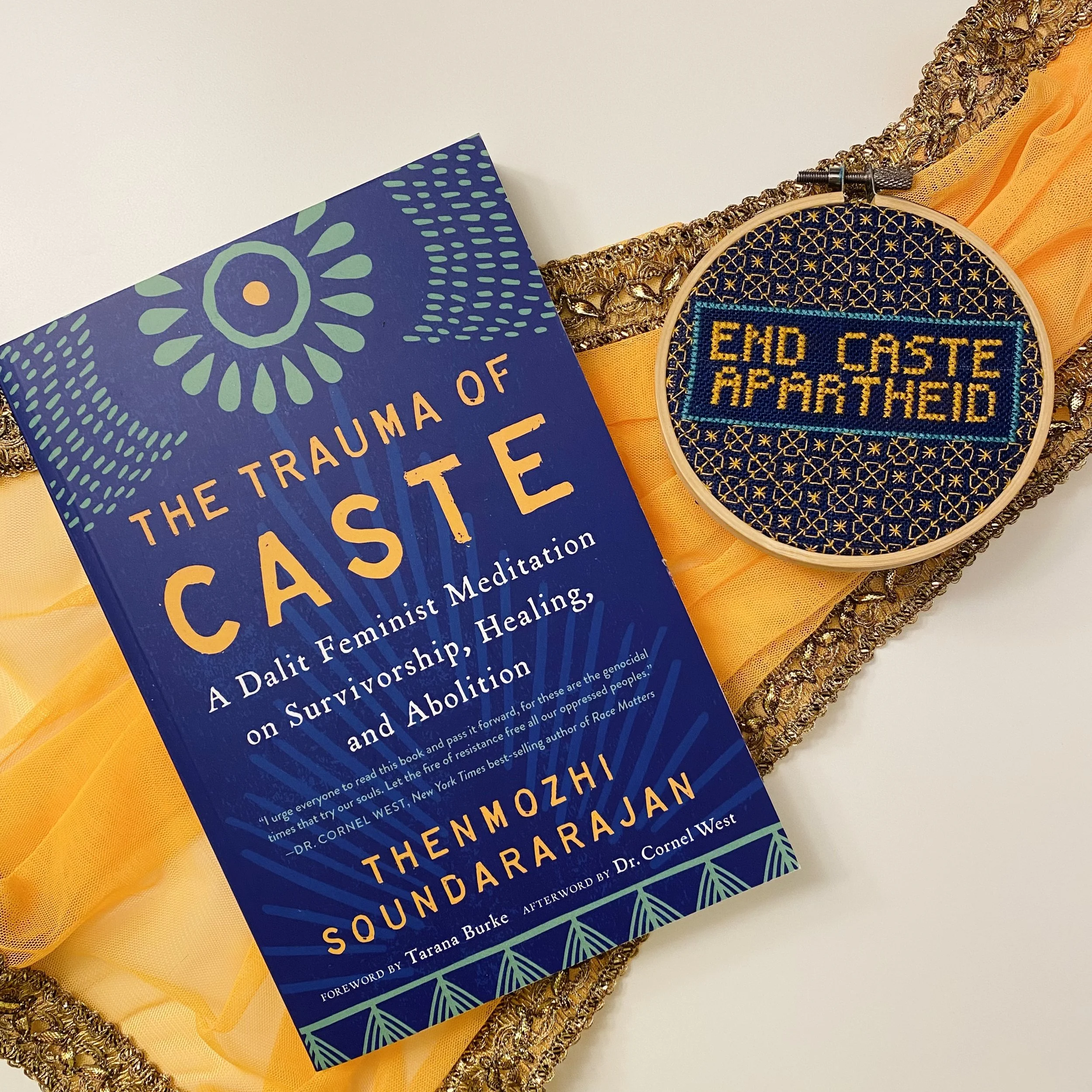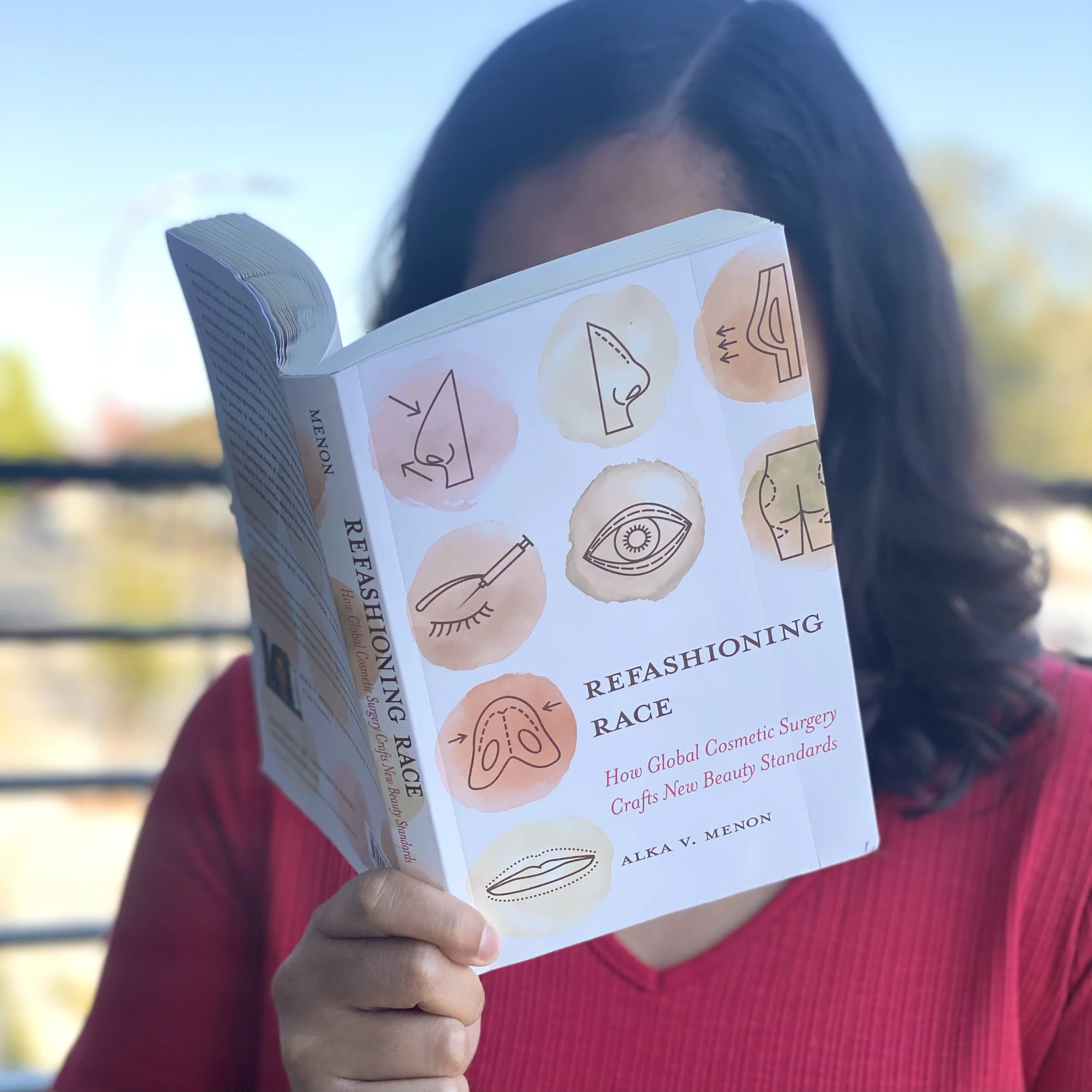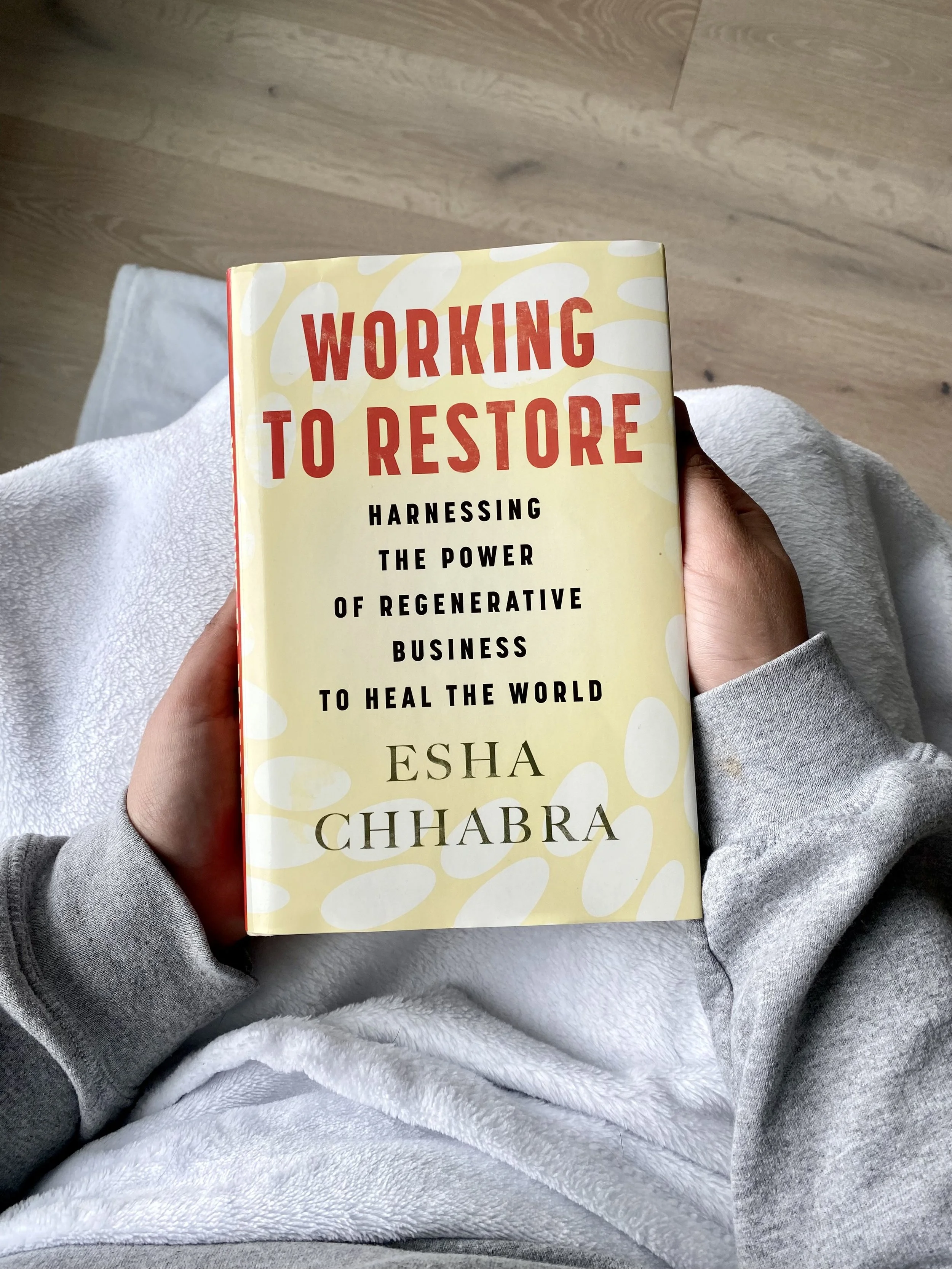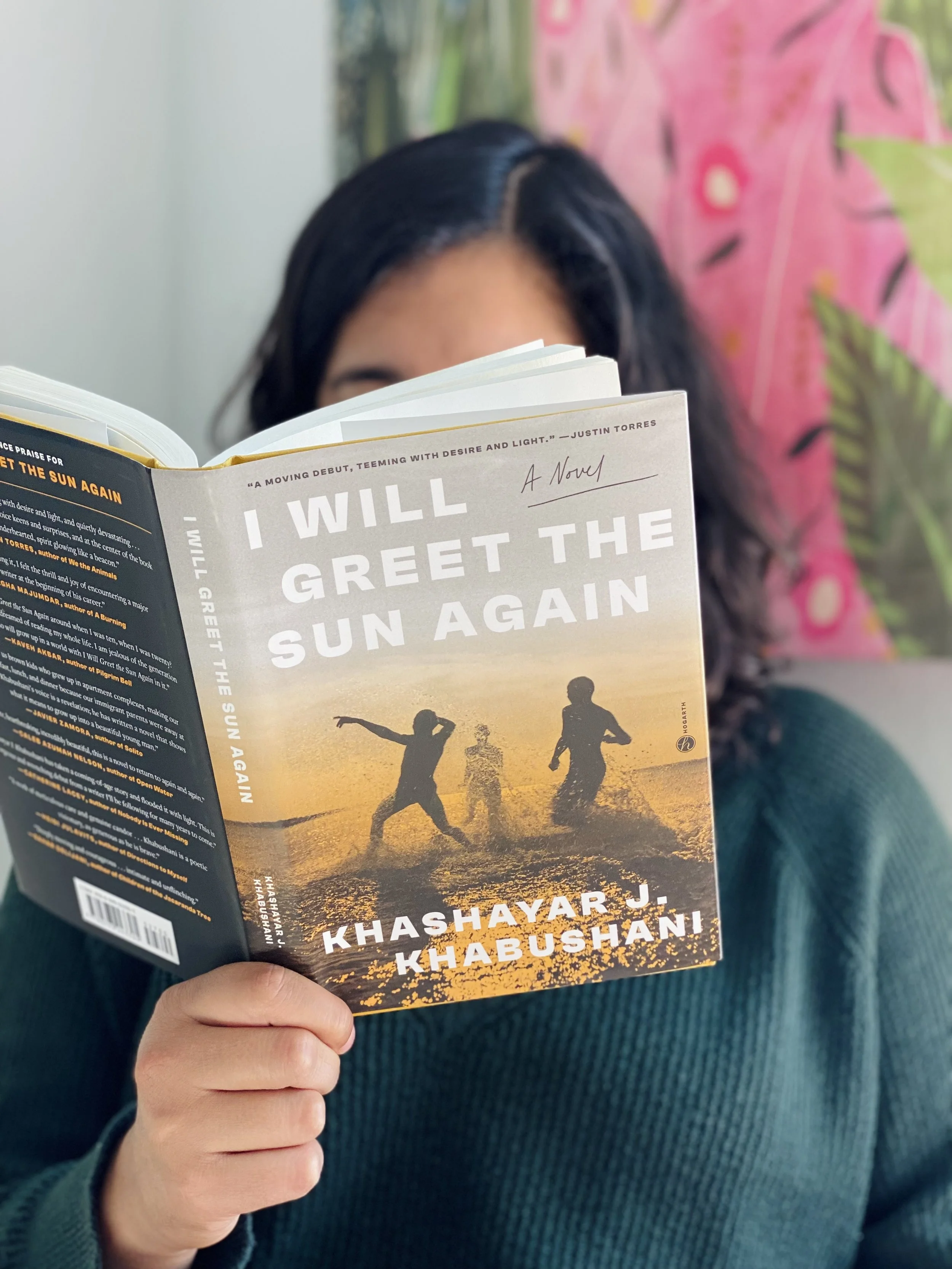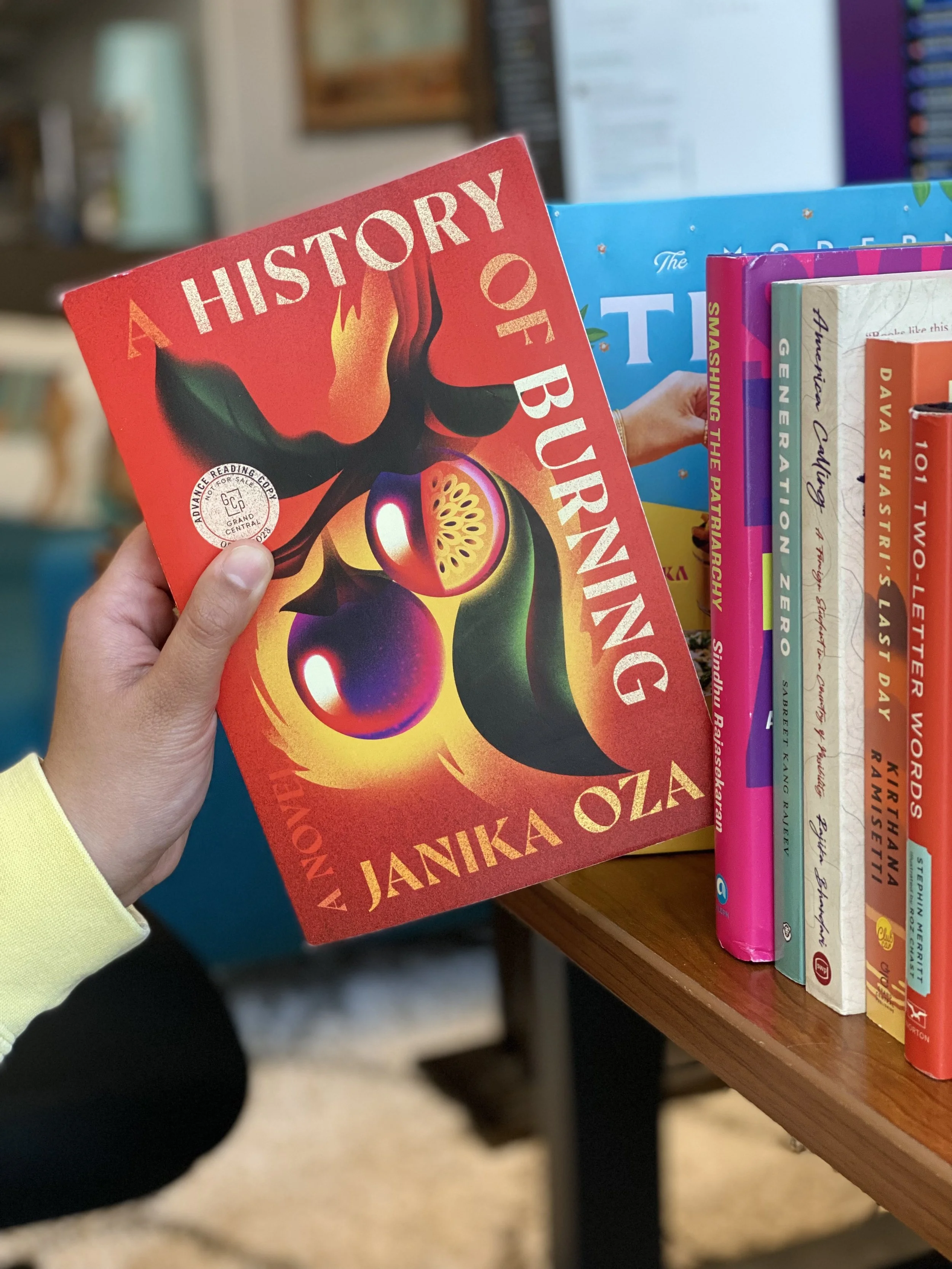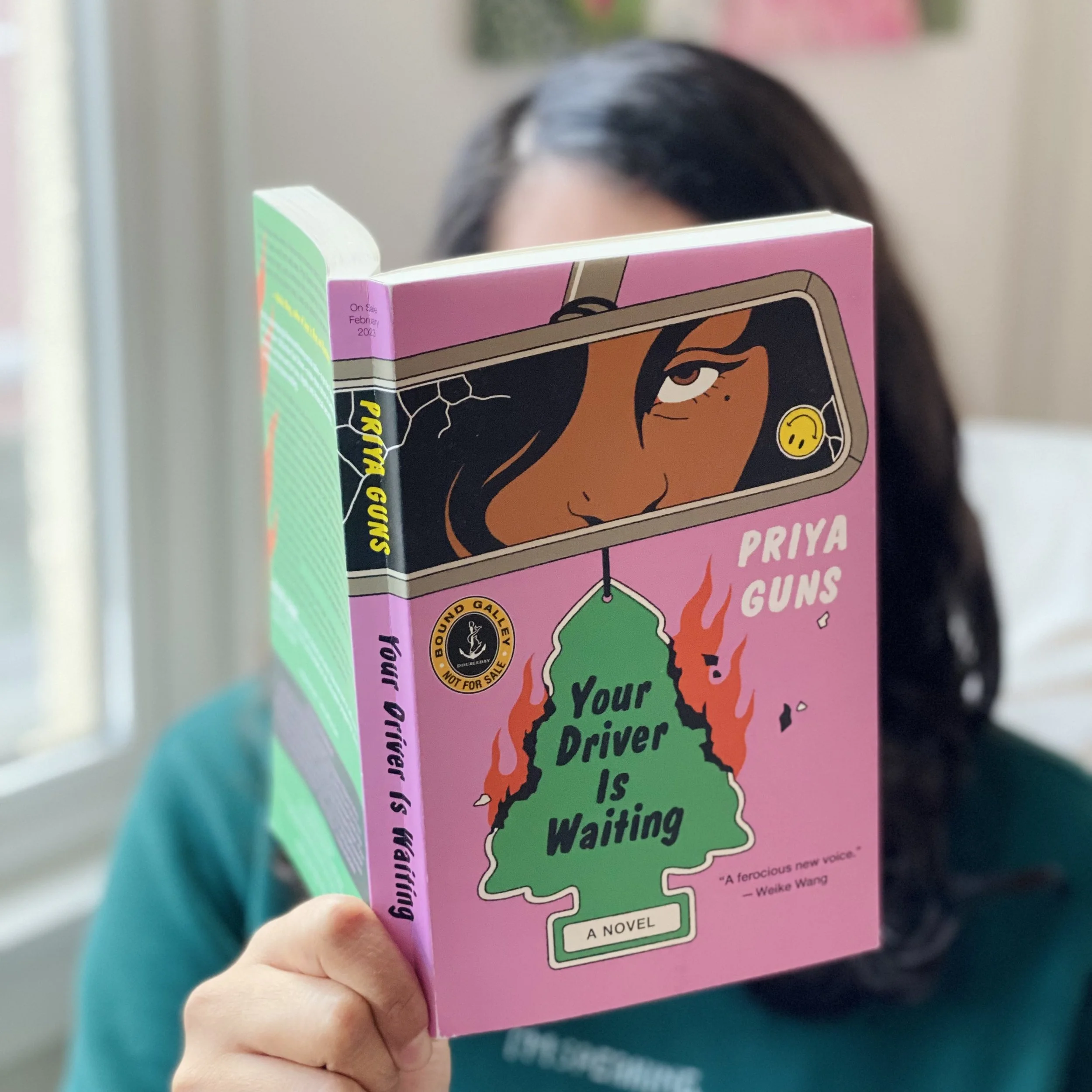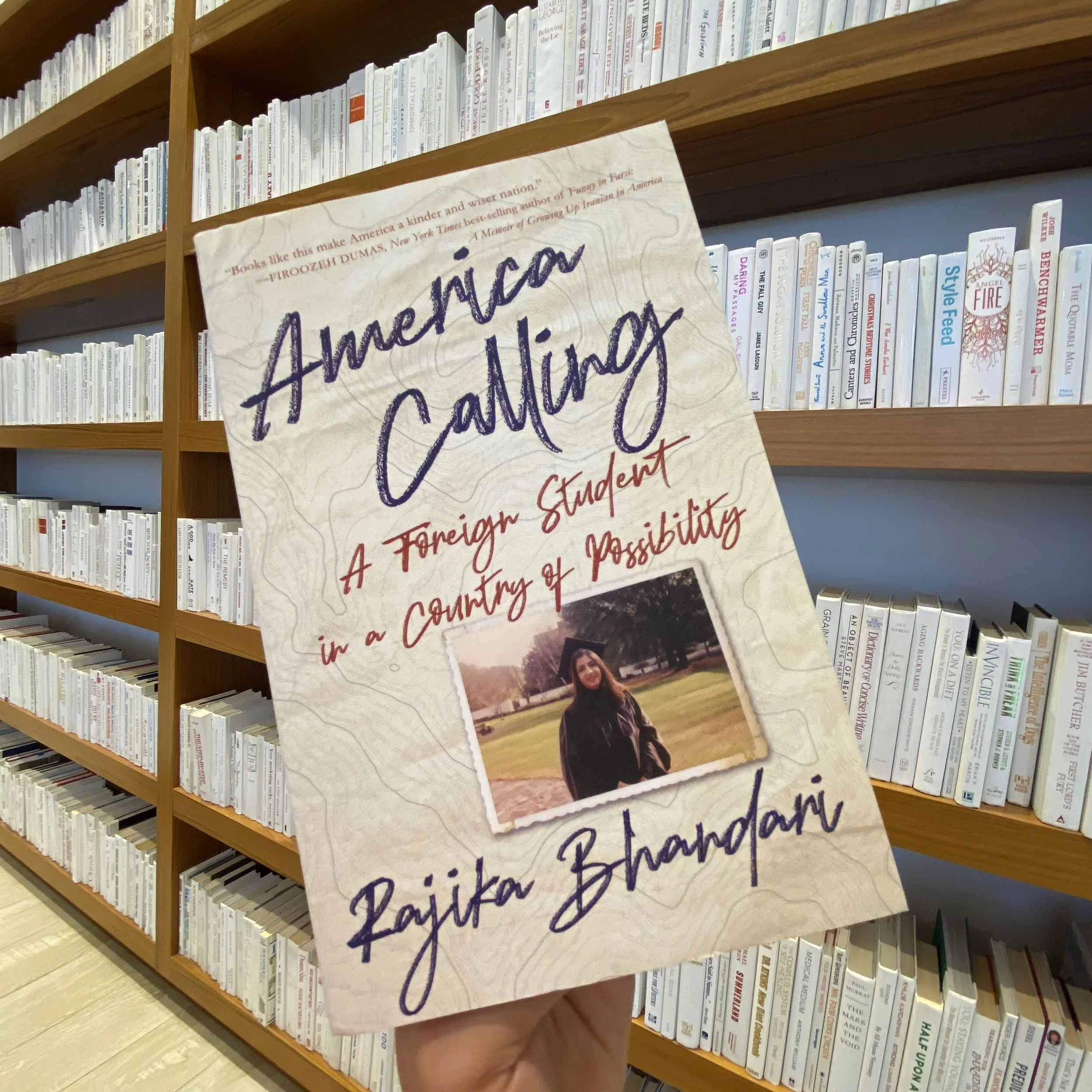Book Reviews
When I’m not doing embroidery, I love to read — especially books by South Asian Authors! I am honored to be a guest reviewer for BrownGirlBookshelf, platform dedicated to sharing books and digital media by South Asian creators.
Looking for my Goodreads profile for all my reads? Let’s be friends here!
Trauma of Caste by Thenmozhi Soundararajan
This one was extra special because I created an embroidery piece to go with the review!
With poignant prose and a clear-eyed examination of the devastating effects of caste apartheid, “Trauma of Caste” is a meditation on the "soul wound" inflicted on generations of marginalized communities. Dalit rigghts activist Thenmozhi Soundararajan compels readers to abandon the compartmentalization of caste-based trauma and instead commit to healing. She explains that unlearning caste is not a one-time process but, instead, a practice.
She implores and guides readers through acknowledging the existence of caste, its source, and ways to combat caste violence. She challenges the notion that the diaspora ended casteism, exposing how caste underlies the prevalence of upper-caste influencers, promoters of "Tamil Brahmin" pride, and religious practices across Hinduism, Buddhism, Sikhism, Islam, and Christianity. Soundararajan goes on to explore the intersections of caste with gender and sexual violence, environment, genocide, as well as the parallels between caste apartheid and slavery in the U.S.
“Trauma of Caste” is a powerful, thought-provoking, and much needed book that combines theoretical analysis with practical insights. Soundararajan’s personal experiences add depth and nuance to the work, making it an important read for anyone interested in understanding the complexities of casteism and its impact on individuals and our society. Soundararajan’s dedication to this issue exemplifies the definition she puts forward: that while one definition of “dalit” is broken, it can be also be read as “resilience.”
See review on BrownGirlBookshelf here
Refashioning Race by Alka V. Menon
Can a plastic surgeon predict cosmetic changes a patient will request based on their demographics? “In “Refashioning Race: How Global Cosmetic Surgery Crafts New Beauty Standards”, Dr. Alka V. Menon demonstrates they can, taking readers into the intricate interplay of race, beauty, and cosmetic surgery, shares guest reviewer @nehaxstitch.
Inspired by a New York Times article that explores ethnic disparities in plastic surgery, Dr. Menon challenges sheds light on a critical yet often overlooked aspect of racial equity projects: beauty standards. She contends that cosmetic surgery serves as a powerful force in reshaping racial identity, challenging readers to reconsider who truly shapes the construct of race.
Dr. Menon characterizes the role of plastic surgeons as gatekeepers of “natural” appearances. One engrossing segment illustrates the negotiation process between surgeons and patients where images of public figures are used to define "desirable" traits, a practice that can resonate with anyone who has compared themselves to others. The book looks at cosmetic surgery practices in the United States and Malaysia, two culturally diverse nations but where this industry is increasingly popular. Dr. Menon's work provides a niche perspective on global beauty ideals, comparing and contrasting the racial expectations and beauty standards in two very different societies, showing that surgeons may inadvertently adhere to racial stereotypes to fulfill patients' desires for undetectable enhancements.
Rather than a broad commentary on cosmetic surgery alone, “Refashioning Race” makes a crucial observation that beauty is often dismissed as "frivolous" and "insignificant," compelling not only clinicians, but academics interested in race theory, as well as non-academics, to reevaluate their preconceived beliefs.
See review on BrownGirlBookshelf here
Working to Restore by Esha Chhabra
In "Working to Restore," Esha Chhabra conducts a profound exploration of how capitalism adversely impacts communities and the environment. “The book sheds light on organizations that claim to prioritize ethical sourcing but are actually greenwashing, or feigning sustainability,” shares guest reviewer nehaxstitch.Chhabra delves into agriculture, supply chain, waste management, inclusion, travel, energy, health, finance, and women in the workforce, providing a thorough exploration of challenges and opportunities. She introduces businesses making a positive impact in each sector, offering valuable insights for readers supporting worthy enterprises.
One poignant case study highlights Amazon rainforest rubber producers collaborating with Veja Sneakers, a sustainable shoe company. Chhabra illustrates the company’s challenge in navigating climate change in Rio Branco, Brazil, where their rubber is sourced, such as with their workers adapting to working in rising temperature conditions.
"Working to Restore" is a captivating and insightful read, and while it may cater to a more academic-minded reader, each chapter delves into a critical piece of the intricacies of the supply chain. Chhabra successfully brings attention to a crucial aspect of capitalism often overlooked by the average consumer in their daily lives. “Working to Restore” provides a nuanced perspective that encourages readers to contemplate the ethical consequences of their choices and consumption patterns.
See review on BrownGirlBookshelf here
I Will Greet the Sun Again by Khashayar J Khabushani
In the vibrant pages of "I Will Greet the Sun Again," Khashayar J Khabushani expertly wields the power of "show, not tell," crafting a narrative that effortlessly captivates while unraveling the complexities of identity, queerness, and the immigrant experience.
Khabushani masterfully weaves open-ended storylines, mirroring the authentic messiness of life and leaving readers with a resonant, lingering charm even after the final page. By the third act, there is a noticeable acceleration in pace, which can leave readers feeling rushed, especially relative to the the slow build and intricate detail that characterized the first two acts.
“In a testament to Khabushani's skill, the first portion of the novel is told through the eyes of a fourth-grader without descending into juvenile or immature prose,” remarks guest reviewer Neha Sharma. “I Will Greet the Sun Again” intricately weaves themes of intersectional identities, queerness, the struggle to fit in, the immigrant experience, and the South Asian-American perspective. Khabushani's debut novel is truly a tapestry of themes that gives the reader both a thought-provoking and resonant experience.
See review on BrownGirlBookshelf here
A History of Burning by Janika Oza
A book rarely feels more like an experience than a story, and “A History of Burning” is just that. Janika Oza’s novel traces a family through generations across India, Uganda, England, and Canada. The scope of the story is nothing short of impressive, starting in 1898 and ending in 1992; and yet, not a single sentence feels extraneous. Despite its length, this captivating novel provides depth to its characters and highlights significant historical events. With each chapter telling a story worth digesting, the book immerses the reader in almost a century's worth of life.
The novel opens with Pirbhai’s struggle to find a job in a small village in India. His life spirals when he is tricked into becoming a laborer on the East African Railway for the British. Pirbhai’s guilt for abandoning his family, intertwined with his actions under British orders, is written with such nuance and detail; it catapults the reader into witnessing how every decision impacts the future generations of Pirbhai’s family.
“’A History of Burning’ is a must-read,” praises guest reviewer @nehaxstitch, “especially for those who have not yet been exposed to the South Asian diaspora outside of the more commonly discussed locations, such as the United States, Canada, and England.”
The stories of Indian laborers’ unending work on the East African Railway, Idi Amin’s dictatorship, and the expulsion of South Asians from Uganda are explicitly outlined, and further historical events are implied. Viewing these events through the firsthand lens of the characters further proves Oza’s brilliance. Her writing is well-researched, illustrative, and enchanting.
See review on BrownGirlBookshelf here
Your Driver is Waiting by Priya Guns
Priya Guns’ Your Driver is Waiting immediately pulls the reader into the life of Damani, an overworked, yet sharp-humored rideshare driver who is struggling to make ends meet. From detailed depictions of passengers who pass through her car, to vivid descriptions of even the various smells Damani encounters, Guns’ writing style quickly paints a picture of the main character’s world. The exhaustion of Damani as the narrator, woven into the stream-of-consciousness made for an entertaining writing style.
Using Damani’s sarcastic comments as a foil to the more serious, real world-focused events sprinkled humor throughout the book. As the story progressed, I began to see glimpses of social justice themes, such as gentrification, performative activism, and self-love in a non-conventionally attractive body. Furthermore, the inclusion of a queer, interracial, and interfaith relationship was commendable, as Guns clearly put serious effort into writing diverse characters without resorting to stereotypes. Guns also began to touch upon the white savior complex and the damage that non-grassroots activism can do to a community, and I wish the story took a more realistic turn in facing the consequences of these issues. However, I can see the author trying to approach social justice from a more realistic angle – in real life, it is impossible for a single person to take blame or solve complex, deep rooted problems in our society.
My main disappointment with the book was that the plot was slow to start. While the writing truly immerses the reader into Damani’s day-to-day life, it felt tedious at times. Perhaps this was the intention of the author as a way to demonstrate the character struggling the weight of her responsibilities. The blurb on the back of the book states that a character “does something unforgivable, setting off an explosive chain of events”, yet this event only happens in the last 25% of the story. Furthermore, the book's chapters were divided into only a few pages each, which made it feel like the pacing should have been much quicker with a choppy writing style.
Overall, Your Driver is Waiting incorporated numerous social justice themes, diverse character representation, and sharp humor. The easy to follow storyline mixed with more serious themes was appreciated - quicker pacing would have made this book a perfect, bingeable read!
Such Big Dreams by Reema Patel
Reema Patel’s bold, vivid language catapults readers into the streets of Mumbai, and is a paramount example of the impact the technique “show, don’t tell” can have in writing.
Chapters are sprinkled with depictions of vada pav, chai ☕, thalis, and dal khichidi – it was difficult to curb the cravings. 🤤 “Hinglish” is naturally intertwined in the characters’ dialogue, without the cumbersome interruptions of definitions.
Rakhi, our protagonist, is a former Mumbai street child. Despite working for a law firm that advocates for lower socioeconomic classes, Rakhi faces discrimination from her colleagues, driving home how deeply entrenched classism and casteism is in Indian society. 👩🏽💼
“Among the challenging subjects Patel introduces is the hypocrisy associated with the white savior complex,” shares guest reviewer @nehaxstitch. Without naming voluntourism, Patel explains the damaging effects of seemingly altruistic trips to developing counties.
The story itself is an absolute page-turner. ➡️ Patel never strays far from reality, creating a realistic fictional protagonist (and situations): readers feel Rakhi’s excitement, desperation, grief, and anger. It’s hard not to root for her - a deeply genuine yet flawed character. Indians and non-Indians alike will feel tethered to her character.
See review on BrownGirlBookshelf here
Smashing the Patriarchy by Sindhu Rajasekaran
Sindhu Rajasekaran’s “Smashing the Patriarchy: A Guide for the 21st-Century Indian Woman” is a brilliant illustration of the subtle and explicit ways Indian women battle the patriarchy daily. Much of the book dissects modern feminism by looking at consent, activism (in all forms), queer-inclusive and male-exclusive sex-positivity, and the deep-rooted casteism that exists even in the most “liberal” or “judgement-free” feminist circles. “To say that Rajasekaran leaves no stone unturned in her analysis would be an understatement,” recaps guest reviewer @nehaxstitch. Sprinkled with meaningful footnotes (including shouts-outs to some amazing Instagram accounts!), Rajasekaran provides context for readers who require an introduction to feminism, yet does not overwhelm readers who are well-versed on the subject — making this book as deep or quick of a read.
This was my first time reading a feminist book from an Indian (rather than an Indian-American) perspective. I was especially enthralled by the inclusion of casteism (i.e. the Brahmanical patriarchy) and the validity of online activism. For example, Rajasekaran highlights the #unfairandlovely campaign - a campaign that challenged the widely-held belief that fair skin is the most attractive. Because online activism is an accessible way to engage in social justice, I was able to participate in the campaign.
My only gripe with the book is the way information is presented. Beyond sub-headers, the book lacked real chapters. Additionally, while every topic was incredibly important, and Rajasekaran did a wonderful job of breaking down each subject, the amount of information was not the easiest to get through. With that being said, I could not identify a part of the book that I would cut out since every concept was critical to a fully inclusive analysis.
See review on BrownGirlBookshelf here
America Calling by Rajika Bhandari
Dr. Rajika Bhandari’s 'America Calling: A Foreign Student in a Country of Possibility', is bold, inspiring, and laugh-out-loud relatable," shares guest reviewer Neha Sharma. While Bhandari replays early memories of life in America, she makes space for a deeper exploration of the value international students add to the country. She sprinkles expertise throughout her book by contextualizing anecdotes with statistics, including the fact that international students add $45 billion to the economy yearly. From an innocent first encounter with a chocolate chip cookie to examining the difference between sexism in the American versus Indian workplace, Dr. Bhandari’s analysis is an educational read for both Indians and non-Indians.
I especially enjoyed the chapter dedicated to examining what Dr. Bhandari calls the “privilege of ‘triple-selection’”, which encompasses education, financial privilege, and IIT students. While the chapter includes a fairly in-depth analysis of her intersectional privilege, I was surprised to see that caste was only mentioned in brief passing. Caste is the basis of the social hierarchy in India. More than 90% of Indian immigrants in the U.S. are upper caste. To not make this a larger point in her examination of privilege seemed misleading. With that being said, this was my only gripe with the book.
Overall, Dr. Bhandari’s personality, humor, and confidence shine through the book as she provides a peek into the complex stories behind every immigrant student. She kept me so engaged, I read "America Calling" in one sitting.
See review on BrownGirlBookshelf here

